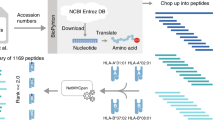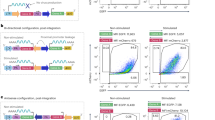Abstract
Previously we documented the transposition of an intracisternal A particle (IAP) provirus to the interleukin 3 (IL-3) locus which resulted in autocrine transformation. In the present study, the effects of different long terminal repeats (LTRs) on IL-3 gene expression and autocrine transformation were investigated. LTRs from defective IAPs, and replication competent Moloney murine leukemia virus (MoMuLV), human T cell leukemia (HTLV), and immunodeficiency (HIV) viruses, were inserted 5′ of the IL-3 promoter region, and their transforming abilities determined. Addition of the lymphocyte specific (LS) IAP-LTR to the germline IL-3 (gIL3) gene, the IAP-LTR present in the previously described transposition, resulted in a modified IL-3 gene that only infrequently transformed IL-3-dependent cells. In contrast, addition of plasmacytoma (PC) IAP-LTRs to the gIL3 gene, which were isolated from IAPs expressed in plasmacytomas, resulted in modified IL-3 genes that transformed IL-3-dependent cells more readily. The MoMuLV-LTR and the TCRδ enhancer also stimulated high levels of IL-3 expression and autocrine transformation. In contrast, the HTLV-I, HTLV-II and HIV LTRs did not induce significant IL-3 synthesis or autocrine transformation. Consistent with these results, higher levels of CAT expression were observed in cells transiently transfected with PC-IAP-LTR or a TCR enhancer compared with LS-IAP and HTLV LTRs. In summary, the rank order for the effects of different LTRs on IL-3 expression and cell transformation is: TCRδ-enhancer ≈ MoMuLV-LTR > PC-IAP-LTRs ≫ LS-IAP-LTR ≫ HTLV-LTRs ≈ HIV-LTR. These results indicate that the LS-IAP-LTR is very weak at inducing IL-3 gene transcription and additional genetic mutations may be necessary for LS-IAPs to induce autocrine transformation of hematopoietic cells. In contrast, the enhancers contained in PC-IAP-LTRs and TCR enhancers may be more effective in inducing abnormal gene expression and malignant transformation.
This is a preview of subscription content, access via your institution
Access options
Subscribe to this journal
Receive 12 print issues and online access
$259.00 per year
only $21.58 per issue
Buy this article
- Purchase on Springer Link
- Instant access to full article PDF
Prices may be subject to local taxes which are calculated during checkout
Similar content being viewed by others
Author information
Authors and Affiliations
Rights and permissions
About this article
Cite this article
Wang, XY., McCubrey, J. Differential effects of retroviral long terminal repeats on interleukin-3 gene expression and autocrine transformation. Leukemia 11, 1711–1725 (1997). https://doi.org/10.1038/sj.leu.2400793
Received:
Accepted:
Issue Date:
DOI: https://doi.org/10.1038/sj.leu.2400793
Keywords
This article is cited by
-
Involvement of p53 and Raf/MEK/ERK pathways in hematopoietic drug resistance
Leukemia (2008)
-
JAK/STAT, Raf/MEK/ERK, PI3K/Akt and BCR-ABL in cell cycle progression and leukemogenesis
Leukemia (2004)
-
Requirement for the PI3K/Akt pathway in MEK1-mediated growth and prevention of apoptosis: identification of an Achilles heel in leukemia
Leukemia (2003)
-
Differential effects of kinase cascade inhibitors on neoplastic and cytokine-mediated cell proliferation
Leukemia (2003)
-
The Raf/MEK/ERK signal transduction cascade as a target for chemotherapeutic intervention in leukemia
Leukemia (2002)



